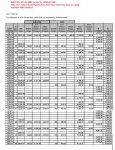bishopj
Member
- Location
- Cuyahoga Falls, Ohio
Newer Meters...
Newer Meters...
Many of the newer digital meters have a function built in that will allow you to read the current, voltage and watts. The cheaper residential meters in our municipal don't have this function - but if the meter can record demand, they usually do have this function. If so, there will be a reed switch installed behind the display. If you pass a magnet above the display, the normal display will change to "ALT". Then, it will scroll through voltage on each leg, current through each leg, instantaneous demand, number of power outages, etc. Just don't leave the magnet sitting there - this will change the meter to another mode, and I don't know if the meter will return to normal if you do this. No guarantee that your meter will have this function - but might be worth a try
Newer Meters...
Many of the newer digital meters have a function built in that will allow you to read the current, voltage and watts. The cheaper residential meters in our municipal don't have this function - but if the meter can record demand, they usually do have this function. If so, there will be a reed switch installed behind the display. If you pass a magnet above the display, the normal display will change to "ALT". Then, it will scroll through voltage on each leg, current through each leg, instantaneous demand, number of power outages, etc. Just don't leave the magnet sitting there - this will change the meter to another mode, and I don't know if the meter will return to normal if you do this. No guarantee that your meter will have this function - but might be worth a try


